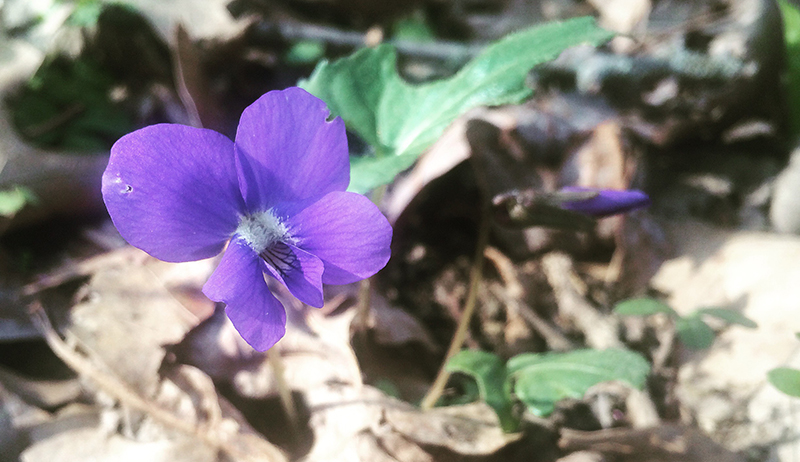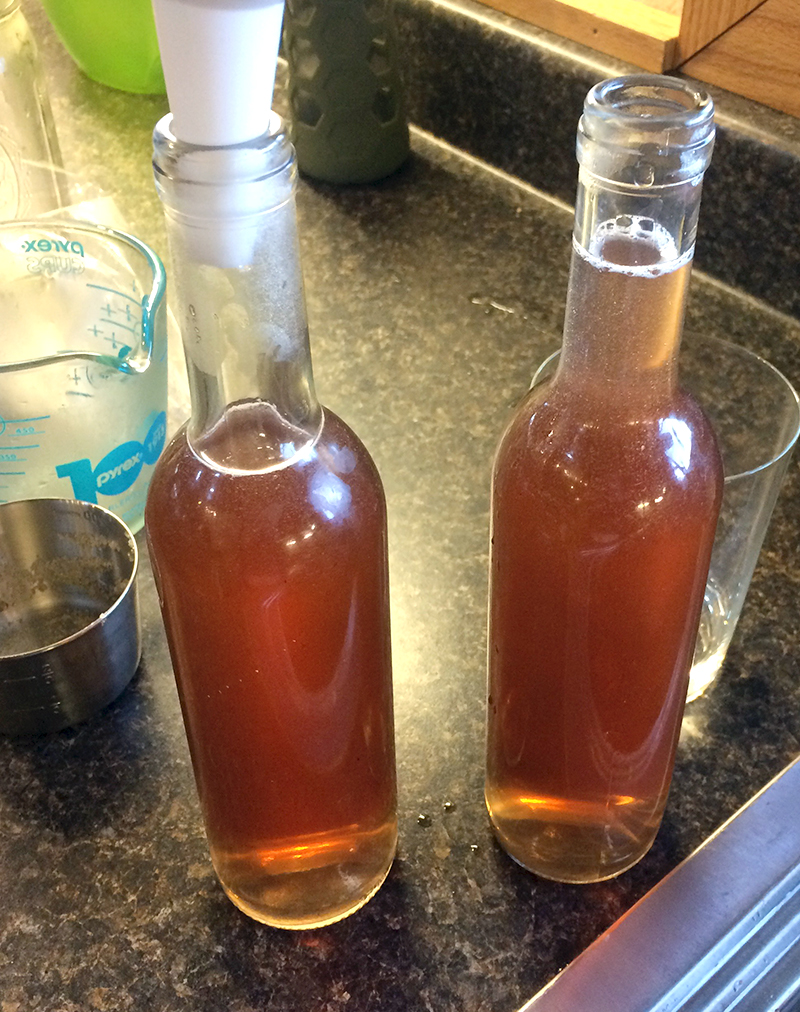
I don’t think I’ve ever been more eager for spring to arrive. It seems like this winter lasted forever, and when it’s your first year on a farm, all you can think about is getting out on your land to do all those things you always dreamed about doing with it. With the trees and wildflowers finally in bloom, a friend and I headed out to the woods for a foraging expedition. Our mission: violets.
It’s actually a year ago this week that Mr. B and I first walked this land, never dreaming that soon it would actually be ours. We were taken by the beauty of this place in spring, particularly the dogwoods and redbuds in bloom, and I remember lusting after all the violets. None were growing in our city backyard at the time, despite my encouragement of one lone flower to grow and spread, and at the time, I desperately wanted to make violet syrup. Given this anniversary of sorts, foraging for violets and making syrup seemed like an appropriate celebration.
It’s been so interesting to observe the ecology of our land. Despite the rough terrain and rocky clay soil, there’s a whole lot of plant medicine to be found if you know where to look. During walks around our trails you’ll find little pockets of cleavers, garlic mustard (OK, being invasive, those pockets aren’t so little), yarrow and dandelions. The violets here don’t grow in great swaths, as I tended to find in certain neighborhood yards in town, but instead in little woodland clusters. The stand we found was in a valley with an west-facing hillside.
We crouched down among the trees, harvesting beside trilliums and other forest wildflowers I have yet to identify. The one downside to this time of year is that the ticks are now out in full-force, so we did have to battle those a bit, but the reward of a bagful of violet blooms and leaves was worth it.
Fortunately, you don’t need many violets to make a syrup. In fact, we were able to make two types: one with the blooms, which turns a lovely purple color, and one with the leaves, which makes a wonderful cough syrup for a dry cough. The process of making each is simple:
Step 1: Separate Your Flowers & Leaves

After returning from the forest, we divvied up our collection into flowers and leaves. I suppose you could combine the two, but I wanted to make syrups specifically for the qualities mentioned above.
Step 2: Make A Strong Tea

We put the flowers and leaves in separate mason jars, and then poured hot water overtop so it just covered the plant material. We then let the tea sit until it cooled, ensuring a strong tea that pulls out all the of the herb’s constituents that will go to benefit the body.
Step 3: Add Sugar

Making a syrup is one of the simplest home medicines you can make. It’s as simple as making a simple syrup, substituting your strong tea for the water in the recipe.
For the violet flower syrup, we used raw sugar in a 1:1 ration. With the tea and sugar alone, they syrup is a blue-indigo color, but if you add just a little bit of lemon juice, it transforms into a brilliant purple. However, I got a little overzealous with the lemon juice, and my syrup turned a nice champagne pink. It’s not quite the color I was after, but it’s still pretty. I’ve been using the syrup to flavor Greek yogurt, and I have plans to use it in fun treats, like homemade ice cream and scones.
For the violet leaf syrup, we used raw honey in a 2:1 ratio for the additional medicinal benefits it offers. The double honey makes the syrup thicker, which is ideal for a cough medicine. When making a syrup with honey, you have to be sure not to heat the mixture to above 110 degrees F—heating to even just a simmer can destroy all the good qualities of the honey. With the tea just warmed, mix in the honey until it dissolves. This I’ll keep on hand for a cough, which may come in handy during allergy season.




